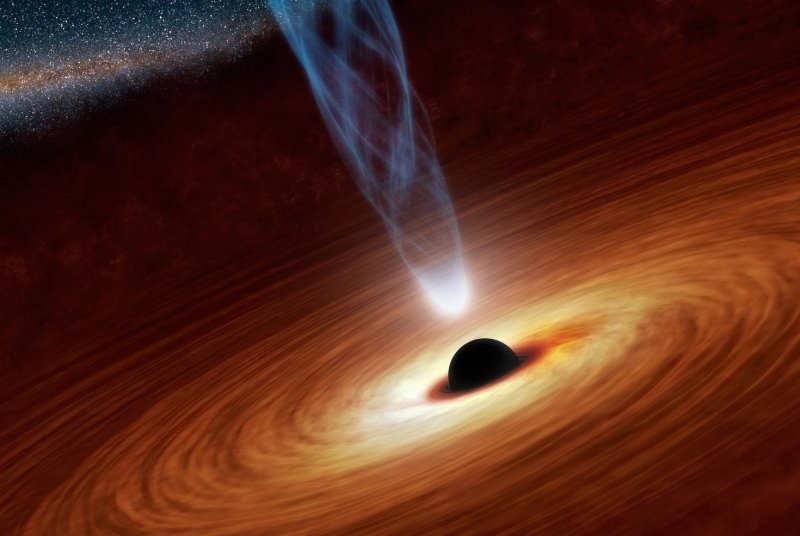In this rendition released by NASA on Aug.29th, 2013, thew artist illustrates a supermassive black hole with millions to billions times the mass of our sun. File Photo by UPI/NASA |
License Photo
WASHINGTON, Feb. 26 (UPI) -- Researchers say they've discovered one of the largest black holes of its kind. The mass of 12 billion suns, it the largest to have formed within 1 billion years of the Big Bang -- larger than it should be for its age, scientists say.
Astronomers can't see the black hole, of course. But they can calculate its size by studying the bright light of its accompanying quasar. A quasar is the collection of light given off as superheated gas is squeezed as it is pulled into the black hole.
The light from the quasar that scientists have observed is 12.8 billion years old, roughly 875 million years after the universe was formed. There are roughly 40 other quasars formed during the billion years after the Big Bang. Compared to its peers, though, the newly discovered quasar (J0100+2802) is a monster -- 12 times bigger and brighter.
"This is the biggest monster we've ever detected in terms of luminosity," Avi Loeb, chair of the Harvard astronomy department who didn't assist in the research, told the National Geographic.
The quasar was spotted by telescopes in China, Hawaii, Arizona and Chile, and studied by a team of astronomers from around the world. But it's discoverers aren't entirely sure how it grew so big, so fast.
"It must have been accreting gas at close to the maximum rate for most of its existence," Bram Venemans, an astronomer at the Max Planck Institute for Astronomy in Heidelberg, Germany, wrote in commentary accompanying the new research -- published this week in the journal Nature.
Researchers are hopeful that further study of the quasar will offer new revelations about the early universe.















